How to Care for Succulents Indoors
Growing succulents indoors can be a bit tricky. However, with these simple tips you'll be able to better care for your indoor succulent collection.
As cute as they are, succulents don't always make the best indoor house plants.
But, that doesn't mean you shouldn't grow them!
This post will teach you exactly how to grow beautiful, healthy succulents indoors.
To help you even further, start by downloading my free cheat sheet to see what it looks like when your succulents need more or less water. Click here to grab that that, it'll be super helpful.
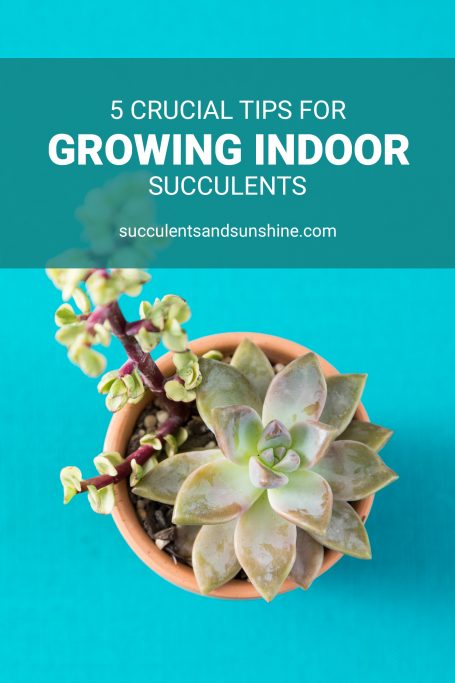
Quick heads up… Some of the links on this page may be affiliate links, meaning I receive a commission (at no extra cost to you) if you click on the link and make a purchase. I only recommend products I've used and love unless stated otherwise.
Start with the right succulents
Not all succulents are suited for indoor growing. Choosing succulents that don't like full sun, but prefer shade or low light will make a big difference in the success of your indoor succulent garden.
Click here to shop for great indoor succulents from one of our favorite vendors.
In general, succulents that have bright colors (such as reds, purples and oranges) don't do well indoors. They require some direct sun and more light than is generally available indoors.
A great place to start is with succulents that are naturally green. A few great examples include Haworthia and Gasteria varieties like the ones pictured below.
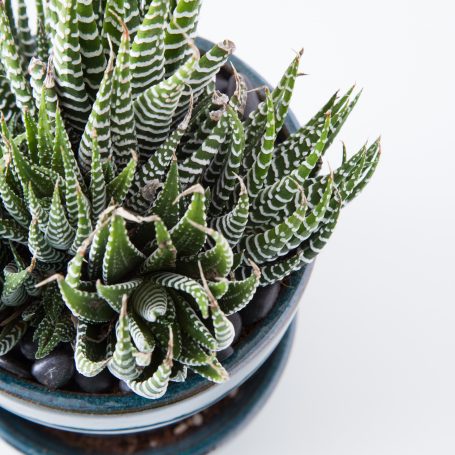
The quick video below will give you an overview of a few of my favorite succulents for growing indoors!
As much light as possible
When succulents are indoors it's often hard for them to get enough sunlight. Outdoors they generally need about 6 hours of bright, indirect sunlight each day.
However, indoors, you'll want to place your succulents near a window that gets light all day. If this isn't an option, place your succulents near the brightest window or brightest area of your home or office.
Learn more by watching this video:
Water more, but less frequently
The biggest problem new succulent growers face with keeping their succulents alive indoors is watering. So much so, that I've dedicated not just an entire post (you can read that here) but also a whole ebook to watering succulents.
It's a big deal! Succulents need a surprising amount of water to thrive. However, they don't like to be watered as frequently as most indoor plants.
But, I wouldn't go so far as to say succulents rarely need water. So… here's the deal…
Succulents like to have their roots soaked with water but then dry out quickly. Then, watered again after the soil has been dry for a few days.
Lightly spraying succulents with water can help them survive for a period of time, but if you really want to thrive, they need to follow the “soak and dry” method.
Don't water indoor succulents daily. That's the quickest way to kill them.
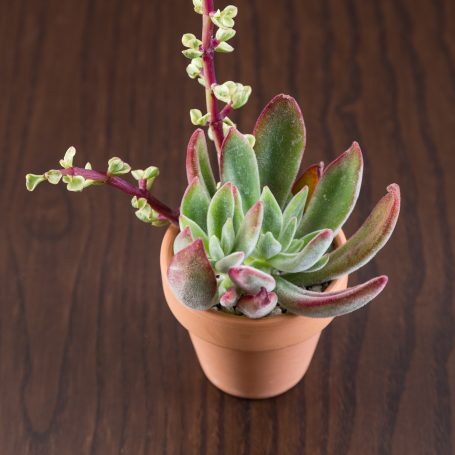
Also know that succulents have a dormant period when don't need as much water then. Generally this is in the cooler months of the year. Since they aren't actively growing, they don't use up as much water.
I get quite a few emails with people who think their succulents are dying because the leaves are wilting and shriveling up. Here is a little secret, just like all plants, eventually the lower leaves of succulents are going to shrivel up and die.
You should only be concerned about dying leaves if the newest or uppermost leaves on your succulent are shriveling. If it's just the ones near the bottom of the stem (closest to the soil), you don't have anything to worry about!
And, if you haven't already, don't forget to download my free cheat sheet to see what it looks like when your succulents need more or less water. Click here to get the cheat sheet.
Avoid Glass Containers (or anything that doesn't drain)
Glass containers generally aren't a great long term potting solution for succulents. They do not like to be sitting in soggy soil, so a glass jar or terrarium, which does not have anywhere for water to drain out, is not going to make your succulent happy.
Another downside to glass containers is lack of breathability. Succulents need good airflow to maintain healthy roots and therefore healthy stem and leaves.
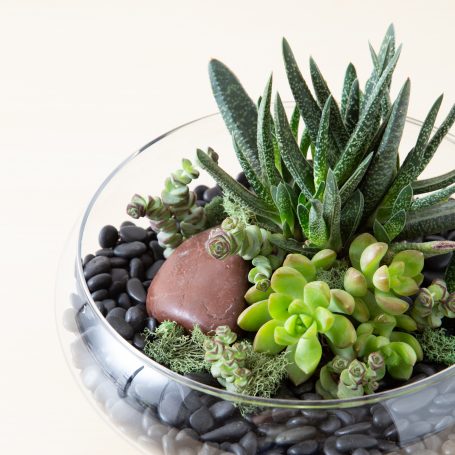
If you have a glass container that you love and are determined to plant your succulents in it, take a look at this post to learn about watering succulents in non-draining containers.
If you can help it, I really recommend staying away from glass unless you know your succulent really well and are confident in your watering skills. And, if you want to learn all about why my favorite pots to use indoors are terra cotta and glazed ceramics, just click here!
You can find a great selection of pots with drainage holes for a great price on Mountain Crest Gardens and Etsy. They provide great air flow and allow the soil to dry out easily.
Bugs
If you are following healthy practices for your succulents as indoor house plants (proper watering, well draining soil, light, airflow, etc.), bugs are generally not a problem.
But… if you happen to purchase a plant with bugs already, they can easily become a big headache.
A common bug new growers encounter are gnats. Generally you'll only get gnats if your soil stays too wet. Gnats are generally avoidable by using a well draining soil mix and allowing your soil to dry out between watering.
Another bug that surfaces all too often is mealy bugs. They are nasty white little guys that hold on to your succulents for dear life.
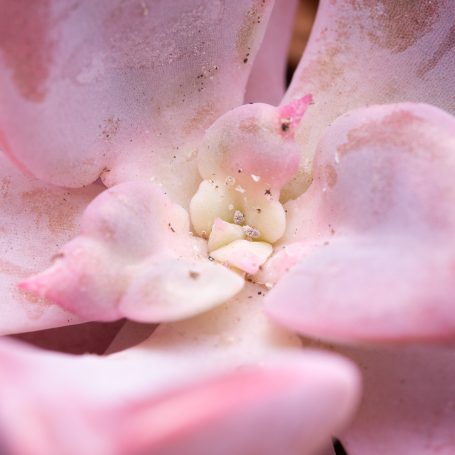
If you do get mealy bugs, you'll want to spray them with rubbing alcohol and pour alcohol over the soil to kill any eggs they may have laid. Learn more about treating mealybugs here.
Have fun!
The great thing about growing succulents indoors is they'll generally look good for several weeks even if you are a “succulent killer.”
But, hopefully you feel better prepared to take care of your succulents indoors now! Make sure you don't let things get too stressful. After all, succulent gardening is supposed to be fun and therapeutic.
For a quick overview of some succulents that do well indoors, check out this video!